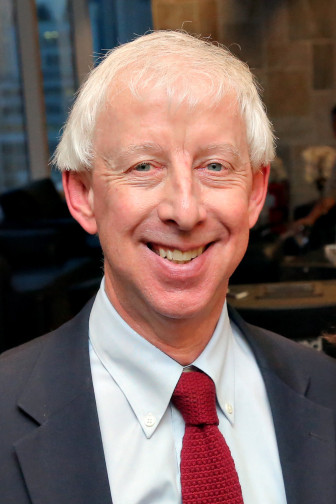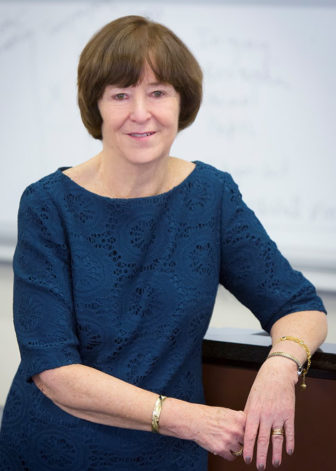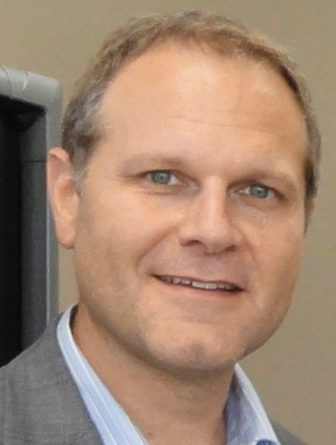


 The work done during the Models for Change Initiative (funded by the John D. & Catherine T. MacArthur Foundation) has embedded structural and practice improvements that continue to influence policy change in juvenile justice toward a more developmentally oriented and equitably responsive system.
The work done during the Models for Change Initiative (funded by the John D. & Catherine T. MacArthur Foundation) has embedded structural and practice improvements that continue to influence policy change in juvenile justice toward a more developmentally oriented and equitably responsive system.
These reflections from leaders in the core states — Pennsylvania, Illinois, Louisiana and Washington state — illustrate the continuing legacy of this wave of juvenile justice reform.
In 2003, the MacArthur Foundation invested in Pennsylvania as its first Models for Change core state. The foundation sought to be a catalyst for change. It succeeded through a partnership with Pennsylvania’s Juvenile Justice and Delinquency Prevention Committee (JJDPC), the state advisory group that distributes federal juvenile justice dollars. MacArthur’s transformative investment in Pennsylvania triggered more than $10 million in grants from the JJDPC, changed Pennsylvania policy and practice and generated leadership that continues to implement a fair, effective, rational and developmentally friendly juvenile justice system.
Together, the Foundation and JJDPC promoted many reforms, which included:
- Using data to reduce DMC (disproportionate minority contact) in Berks County by supporting an evening reporting center that was so successful it led to a) the closure of the juvenile detention center and b) JJDPC approval of grants to five new county sites for evening reporting centers.
- Creating — as part of its focus on youth with mental health problems — county-based diversion programs by publishing a Models for Change-sponsored “Guide to Developing Pre-Adjudication Diversion Policy and Practice in Pennsylvania.” Its implementation led to two Foundation-funded diversion pilot counties that were catalysts for JJDPC investing $1.5 million in 13 additional diversion counties.
- Reforming education in residential facilities — as part of its aftercare focus — through the Pennsylvania Academic and Career/Technical Training Project (PACTT), which, with additional support from the Stoneleigh Foundation, led facilities that once offered a handful of obsolete programs to provide more than 70 high-quality career and technical education programs.
Most importantly, Models for Change nurtured a new generation of leaders. This group, from Pennsylvania’s most important juvenile justice agencies — the JJDPC, the Juvenile Court Judges’ Commission and the Pennsylvania Council of Chief Juvenile Probation Officers — were supportive of collaboration, wise use of data and advancement of evidence-based programming. As Models for Change wound down, these leaders created a “Juvenile Justice System Enhancement Strategy” that guides Pennsylvania policy and practice today.
In Illinois, the legacy of Models for Change has been to infuse a culture of reform into the state’s juvenile justice system. As a result, over the last two years the state has:
- Eliminated automatic transfer of 15-year-olds and limited legislative transfer of 16- and 17-year-olds to the most serious offenses
- Adopted sweeping new confidentiality and expungement protections
- Prohibited indiscriminate shackling
- Closed a third youth prison
- Enacted protections for youth during police questioning
- Ended incarceration for misdemeanors
- Limited mandatory terms of probation
- Constrained the role of the Prison Review Board in release decisions and created new parole opportunities for youth facing long prison sentences
- Expanded its national leadership role in the area of adolescent domestic battery
- Facilitated efforts to improve policy and practice responses to young adults in the criminal justice system.
A core component of Illinois’ success in sustaining the momentum of change has been the establishment or strengthening of organizational structures committed to continuous improvement in the state’s juvenile justice system. These include the state advisory group (the Juvenile Justice Commission), the Illinois Juvenile Justice Leadership Council (co-chaired by two Supreme Court justices and the director of youth prisons) and local juvenile justice coordinating councils.
In addition, the state’s strong advocacy community continues to function as a locus and lever of reform. Finally, the Models for Change initiative created a leadership ladder: Many of the individuals who were instrumental in improving the state’s juvenile justice system have moved into leadership roles where they are able to advocate for broader systemic reforms that protect public safety and improve youth outcomes.
With foresight toward the end of the Models for Change (MfC) initiative, the Louisiana legislature identified the Louisiana State University Institute of Public Health & Justice (IPHJ) as a research and technical assistance resource for the state. One of the first projects for the IPHJ, on the heels of its MfC work, was a legislated study examining the impact of moving 17-year-olds into the juvenile justice system. That study became the catalyst for legislation raising the age of juvenile jurisdiction. The law passed in 2016 with current implementation plans carrying over critical ideas from MfC. They include police diversion, district attorney diversion and a focus on DMC as the state emphasizes early prevention mechanisms to avoid formal entry into the justice system whenever feasible.
Several of the Louisiana leaders and the tools developed during MfC have continued to broaden their reach. For instance, former MfC leaders are now moving into elected or appointed positions where they continue to carry the ideals of MfC to the legislature, state agencies, parish (i.e., county) governance and their professional disciplines. For example, MfC leaders, including IPHJ leadership, have been appointed to the state's board for its state advisory group for the federal Office of Juvenile Justice and Delinquency Prevention. That board guides funding and policy decisions related to juvenile justice in Louisiana.
Tools, such as the evidence-based practice provider survey developed under MfC, have been adapted for a broader behavioral health use, which is helping Louisiana manage its growing dependence on Medicaid. Additionally, training tools, developed in partnership with the National Center for Mental Health and Juvenile Justice (NCMHJJ), have continued to grow into components of nationally funded studies and disseminated through new partnerships with national organizations.
Currently, the NCMHJJ and IPHJ are using MfC-developed tools in a National Institute of Justice school safety study examining the impact of policies and police on campus in two states. The National Association of School Resource Officers has adapted MfC adolescent mental health training for national dissemination.
Washington state too has a different conversation and a different culture — born out of the principles of MfC and building on the work done during the MfC years. We have strong interest in reform in both chambers of the legislature and new leadership that has taken advantage of the opportunity for learning from MfC-sponsored conferences and materials. The current governor has given priority to juvenile justice reform: reducing the number of youth tried as adults, reducing detention of status offenders enhancing diversion options.
Conversations now begin with the adolescent brain science, and practice/policy is considered with that lens. Likewise, there is an acceptance of the need for statewide standards and practice, in spite of the fact that the number of juveniles in state custody has declined precipitously over the past decade. Such a perspective would not have been possible without the work during MfC.
Specific positive results — now embedded in our system — include:
- Data is regularly collected on racial and ethnic disparities and shared with courts, which are actively using the data to make practice and policy choices.
- School assessment is required in truancy proceedings as is the use of community truancy boards before court hearings, significantly reducing the number of kids in court and increasing the number and timeliness of kids getting back to school.
- Workforce training on mental health and trauma issues is in place statewide, youth are assessed earlier in the proceeding and have protection from information disclosed during the screening/assessment being used at trial. A new statutory diversion opportunity is available through memos of understanding between local law enforcement and community-based treatment providers.
- The state Office of Public Defense made permanent the juvenile justice position that once MfC funded and has recently added a second position. Trainings are conducted on a statewide basis annually and work has begun on standards of practice.
Robert G. Schwartz was co-founder of the Juvenile Law Center and served as its executive director from 1982 until his 2015 retirement. He is currently the Beck Chair in Law at Temple University Beasley School of Law.
Diane Geraghty is the A. Kathleen Beazley Chair in Children's Law and Policy at Loyola University Chicago, where she directs the Civitas ChildLaw Center. The center served as the lead entity for the Illinois Models for Change initiative.
Stephen Phillippi, Ph.D. is the Chair of Behavioral & Community Health Sciences at the Louisiana State University School of Public Health. Dr. Phillippi is also the director of the Institute for Public Health and Justice, working to bring evidence-based practices and supportive policies to states and local communities.
Bobbe Bridge served as a trial court judge and an associate justice of the Washington state Supreme Court for 18 years. She is the founding president/CEO of the Center for Children & Youth Justice.
This column has been updated.